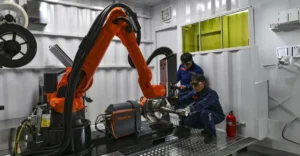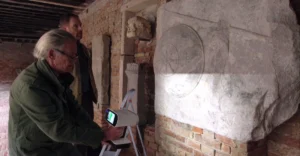Dubai restaurant sets Guinness World Record with 13.75 cubic meter 3D-printed structure, showcasing sustainable design innovation.
Proto21 3D Printing LLC and MYATA Platinum Restaurant have unveiled the world’s largest 3D-printed structure by volume in Dubai, earning official recognition from Guinness World Records. The massive 13.75 cubic meter installation showcases how additive manufacturing can transform commercial interior design.
The MYATA restaurant features a cave-like entrance that guides visitors through a narrow passage before opening into a canyon-inspired interior. The immersive space is characterized by layered curves, textured surfaces, and amber lighting that highlights the contours of the entirely 3D-printed environment.
The record-breaking structure incorporates the entrance, cave, and wall facades in one continuous form. The complete project comprises 23 large-scale printed elements, with 92% being unique one-off pieces rather than repetitive algorithmic designs. Proto21’s team created each component by hand using Blender software.

“This is a project that redefines what’s possible with 3D printing,” said Pir Arkam, CEO and Founder of Proto21. “It’s not experimental anymore, it’s commercially viable, artistically rich, and environmentally smart.”
The ambitious project required an industrial-scale operation involving 158 3D printers running simultaneously. More than 21,700 individual parts were produced using over 10 tons of material, with total printing time exceeding 160,000 hours. Multi-axis robotic arms enabled the creation of complex overhangs and intricate forms without traditional support structures.
The PLA and PETg materials utilised in the internal elements, and PPGF (Polypropylene Glass Fibre) used for external parts to endure the sweltering heat of Dubai, were painstakingly picked for their particular purposes. A sandstone textured finish was also added to provide a more primal, rock-like look.
Read more : New CNT Masterbatches Strengthen 3D Printing Materials
This project is in support of Dubai’s 3D Printing Strategy which targets an emission reduction of 8.8 million tonnes by 2030 through advanced manufacturing technologies. By MYATA’s design, MYATA makes evident the ecological advantages of 3D printing on construction by minimising waste, material use, and negating traditional building limitations.
































